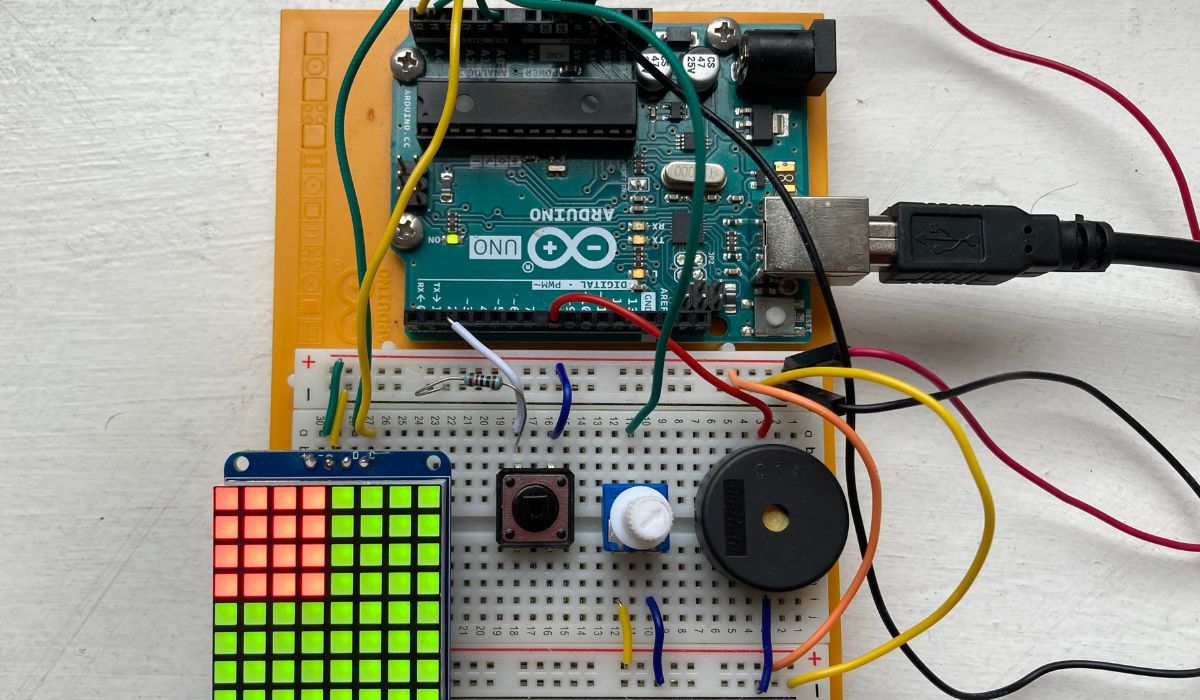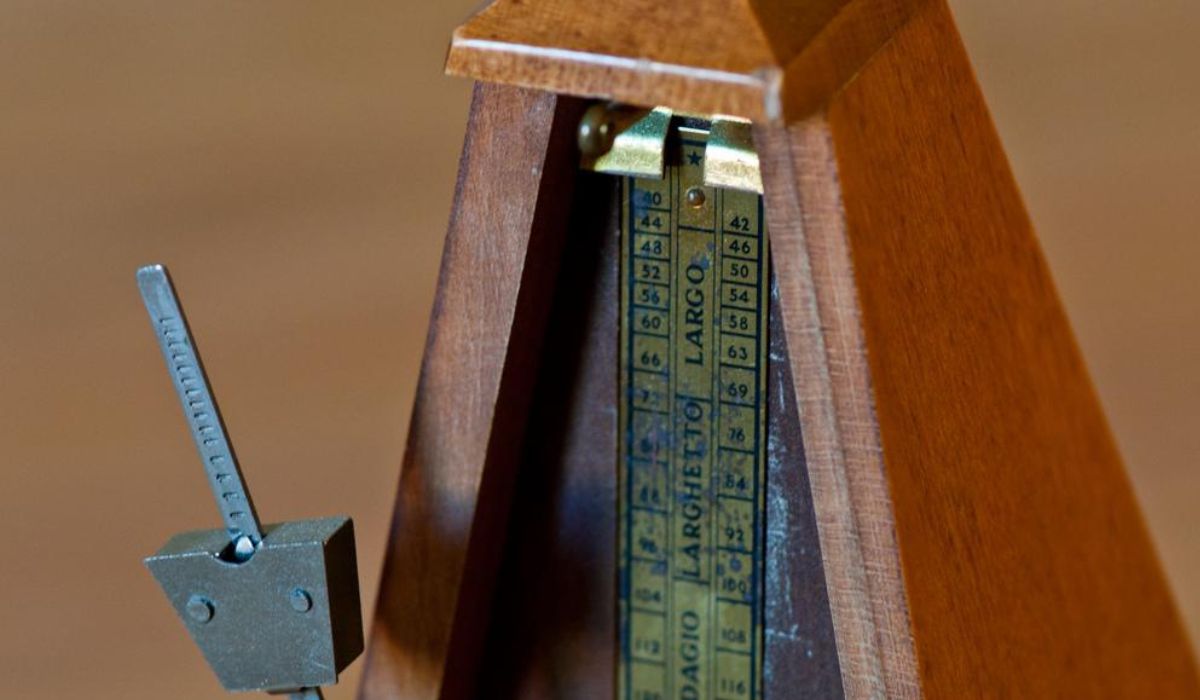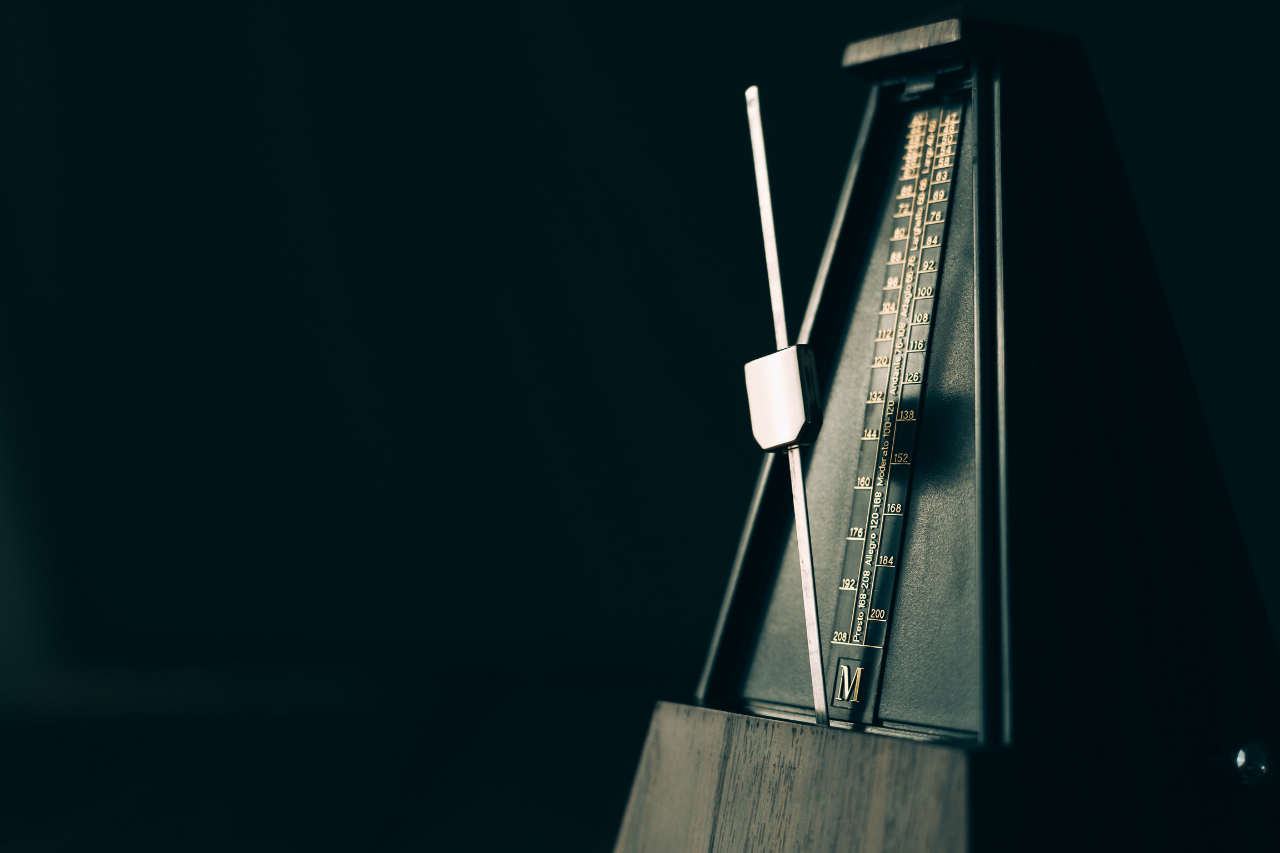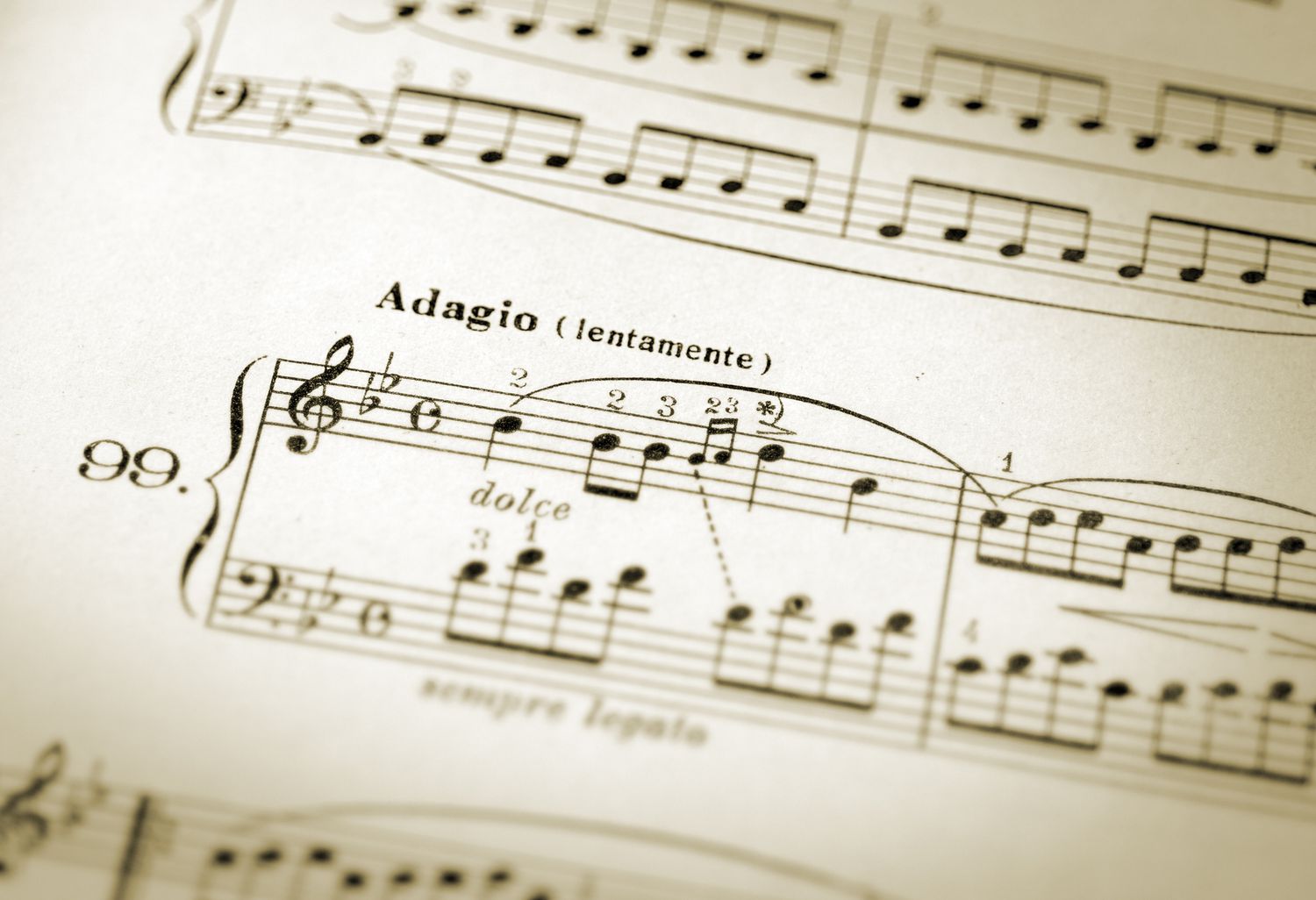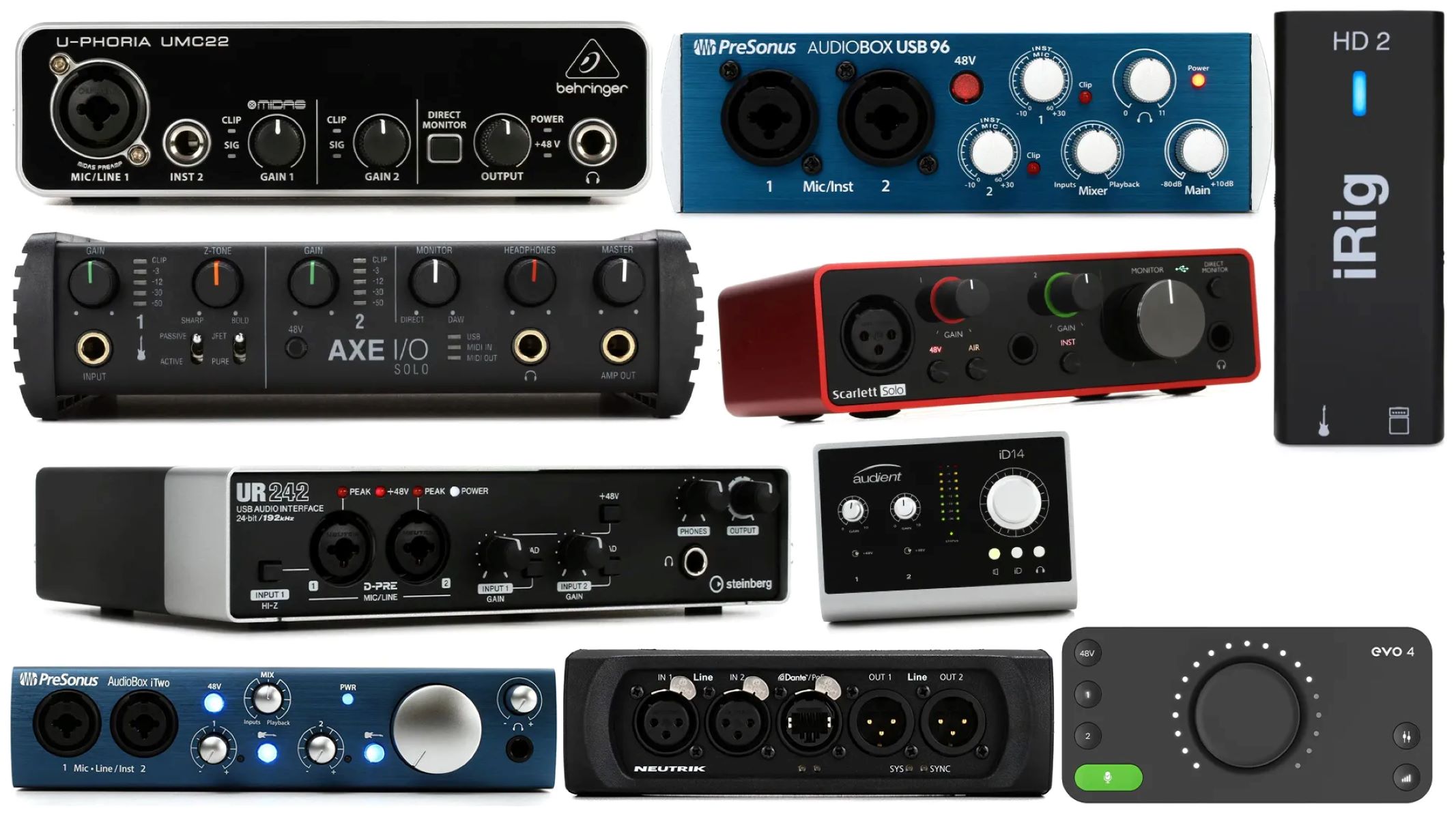Home>Production & Technology>Metronome>How Much Is A Metronome


Metronome
How Much Is A Metronome
Published: January 13, 2024
Looking for a metronome? Find out how much a metronome costs and choose the perfect one to improve your musical timing.
(Many of the links in this article redirect to a specific reviewed product. Your purchase of these products through affiliate links helps to generate commission for AudioLover.com, at no extra cost. Learn more)
Table of Contents
Introduction
When it comes to music practice and performance, timing is everything. Whether you are a pianist, guitarist, drummer, or vocalist, maintaining a steady rhythm is crucial for creating harmonious melodies and captivating performances. And that’s where a metronome comes in.
A metronome is a device used by musicians to keep time during practice sessions and performances. It produces a consistent and precise beat at a specific tempo, helping musicians develop a sense of timing and improve their rhythmic accuracy. Invented in the early 19th century, metronomes have become an essential tool for musicians of all levels.
But as with any musical gadget, the cost of a metronome can vary significantly. From budget-friendly options to high-end models, there are plenty of choices available. In this article, we will explore the world of metronomes and delve into the factors influencing their cost. Whether you are a beginner or a professional musician, this guide will help you make an informed decision about which type of metronome is right for you.
So, if you’re ready to tap into the world of perfect timing, let’s dive into the realm of metronomes and discover how much they truly cost.
What is a metronome?
A metronome is a device used to keep time in music. It produces a steady beat, typically represented by a ticking sound or flashing light, at a specific tempo. Musicians rely on metronomes to develop and maintain a consistent rhythm during practice sessions and performances.
Metronomes come in various shapes and sizes, but they all serve the same purpose: to provide a reliable and unvarying beat for musicians to follow. Traditionally, metronomes were mechanical devices that utilized a pendulum or a spring mechanism to create the rhythmic motion. Nowadays, electronic metronomes with digital displays have become more prevalent, offering additional features and a more precise tempo control.
Metronomes allow musicians to set the desired tempo, measured in beats per minute (BPM), and help them stay on track by providing a constant reference point. Many metronomes also offer the option to subdivide the beat into smaller note values, assisting musicians in mastering complex rhythms. Some advanced metronomes even incorporate additional features such as rhythm patterns, accents, and volume control.
By practicing with a metronome, musicians can improve their timing skills, develop a solid internal pulse, and enhance their overall musical performance. It helps musicians stay in sync with other performers, maintain a consistent tempo throughout a piece, and execute complex passages accurately. Whether you are a beginner learning the basics or an experienced musician refining your technique, a metronome is an invaluable tool for honing your sense of time and rhythm.
In addition to being used by instrumentalists, metronomes are also essential for vocalists. Singers can benefit from practicing their vocal exercises and repertoire with a metronome to ensure their phrasing, timing, and breath control are in sync with the music.
Overall, a metronome is an indispensable tool for musicians seeking to improve their timing, precision, and overall musicality. So, whether you’re a pianist striving for flawless technique or a drummer aiming for perfect groove, adding a metronome to your practice routine can greatly enhance your musical skills.
Why use a metronome?
Using a metronome offers a multitude of benefits for musicians at every skill level. Here are some key reasons why incorporating a metronome into your practice routine is advantageous:
- Develop a reliable sense of timing: A metronome provides a consistent beat, helping you develop a solid internal sense of timing. By practicing with a metronome, you train your ears and body to stay in sync with a steady rhythm, which is crucial for maintaining consistent tempo in performances.
- Improve rhythmic accuracy: Playing or singing accurately in time can be challenging, especially when dealing with complex rhythms. A metronome helps you stay disciplined and execute intricate passages with precision. By subdividing beats and practicing at slower tempos, you can gradually build up your accuracy and control.
- Build speed gradually: Many musicians aspire to play fast and technically challenging pieces. A metronome allows you to gradually build up speed, starting at a comfortable tempo and progressively increasing it as you become more proficient. This incremental approach helps you avoid rushing and maintains proper technique and accuracy.
- Enhance coordination: Playing an instrument or singing involves multitasking, combining various physical movements and mental processes simultaneously. A metronome helps enhance your coordination by synchronizing your movements with the beat, improving your ability to play or sing in time while also executing other musical elements, such as dynamics and expression.
- Prepare for ensemble settings: If you play in a band, orchestra, or any other ensemble, maintaining a steady tempo is crucial to ensure everyone stays together. By practicing with a metronome, you develop the discipline and skills needed to stay synchronized with other musicians and contribute to a cohesive and tight performance.
- Train your ear: Playing with a metronome teaches you to listen critically and develop a keen sense of rhythm. You learn to distinguish subdivisions of beats, identify rhythmic patterns, and internalize the pulse of the music. This improved ear-training translates into better overall musicianship.
Overall, a metronome is an invaluable tool for musicians, helping you develop a precise sense of timing, improve your rhythmic accuracy, and enhance your overall musical abilities. It serves as a trusted companion throughout your musical journey, guiding you to become a more skilled and confident performer.
Types of metronomes
Metronomes come in various types, catering to the diverse needs and preferences of musicians. Let’s explore some of the common types of metronomes available:
- Mechanical metronomes: These are the traditional metronomes that use mechanical components, such as a pendulum or a spring, to produce the rhythmic motion and ticking sound. Mechanical metronomes are known for their classic charm and visual appeal. However, they can be less precise in terms of tempo control compared to electronic metronomes.
- Electronic metronomes: Electronic metronomes have gained popularity due to their accuracy and additional features. They are powered by batteries or AC adapters and feature digital displays for tempo settings. Electronic metronomes offer precise tempo control and often include features such as adjustable volume, rhythm patterns, and subdivisions of beats. They are compact, portable, and convenient to use.
- Smartphone and computer apps: With the advancement of technology, many musicians now use smartphone and computer apps as metronomes. These apps offer a wide range of functionalities beyond basic metronome functions. They can provide visual cues, customizable beat sounds, and the ability to save and share tempo settings. Smartphone and computer apps are convenient and cost-effective alternatives to traditional metronomes.
- Soundless metronomes: Soundless metronomes, also known as silent metronomes or digital vibrating metronomes, provide a tactile experience for musicians. Instead of producing an audible tick, they vibrate or pulsate, allowing musicians to feel the beat rather than hear it. Soundless metronomes are particularly useful for individuals with hearing impairments or when practicing in environments where sound is restricted.
- Clip-on metronomes: Designed primarily for instrumentalists, clip-on metronomes attach directly to the instrument or the musician’s clothing. These metronomes provide visual cues, usually through LED lights or LCD screens, allowing the musician to keep time without having to glance at a separate device. Clip-on metronomes are compact, portable, and ideal for on-the-go practice.
Each type of metronome offers its own set of features and advantages. The choice ultimately depends on the preferences and specific needs of the musician. Whether you prefer the classic charm of a mechanical metronome, the versatility of an electronic metronome, or the convenience of a smartphone app, there is a metronome type to suit every musical journey.
Factors affecting the cost of a metronome
When it comes to purchasing a metronome, the cost can vary depending on several factors. Here are some key considerations that may influence the price of a metronome:
- Quality and durability: Higher-end metronomes are often built with better materials and undergo more rigorous quality control. They are designed to withstand frequent use and last for years, which can contribute to a higher price tag. Cheaper metronomes may be made of lower-quality materials that are more prone to wear and tear.
- Precision and accuracy: The accuracy of tempo control plays a significant role in the cost of a metronome. More expensive models tend to have a higher degree of precision, allowing for finer adjustments to the tempo. This level of accuracy is essential for professional musicians or those working on intricate musical passages.
- Additional features: Some metronomes come equipped with extra features that can affect the price. These features may include rhythm patterns, accent settings, volume control, and the ability to program complex rhythmic sequences. While these features may not be necessary for all musicians, they can be valuable for those requiring advanced functionalities.
- Brand reputation: Well-established brands with a reputation for producing high-quality musical equipment may command higher prices. These brands invest in research and development, ensuring their metronomes are reliable and perform consistently. However, it’s worth noting that lesser-known brands may offer equally capable metronomes at a more affordable price.
- Type of metronome: The type of metronome you choose can also affect the cost. Mechanical metronomes, with their traditional designs and craftsmanship, are often priced higher due to their aesthetic appeal. Electronic metronomes, smartphone apps, and soundless metronomes are generally more budget-friendly alternatives.
- Market demand: Like any product, metronome prices can fluctuate based on market demand. Popular metronome models from reputable brands may have a higher price due to their desirability. Conversely, less in-demand metronomes may have lower price points, offering budget-friendly options for musicians.
It’s essential to carefully assess your needs and budget when considering the cost of a metronome. While more expensive metronomes may offer additional features and higher precision, there are plenty of affordable options available that can still meet the needs of most musicians.
Remember, the most important aspect of a metronome is its ability to provide a steady and reliable beat for your practice sessions. So, whether you opt for a high-end metronome with all the bells and whistles or a more budget-friendly option, choosing the right metronome for your musical journey is what truly matters.
Budget-friendly metronomes
If you’re a musician on a budget, fret not! There are several budget-friendly metronomes available that offer reliable tempo control and essential features. Here are some affordable options to consider:
- Mechanical metronomes: While digital metronomes may be more prevalent nowadays, mechanical metronomes can still be found at lower price points. These metronomes may not have all the bells and whistles of their electronic counterparts, but they offer a classic aesthetic and serve the fundamental purpose of keeping time.
- Basic electronic metronomes: Many entry-level electronic metronomes are available at affordable prices. These metronomes often offer adjustable tempo, rhythm patterns, and subdivisions of beats, providing essential functionalities for practice sessions. Look for reputable brands that offer reliable products without breaking the bank.
- Smartphone apps: If you already have a smartphone, consider utilizing metronome apps as a cost-effective solution. There are numerous free or low-cost metronome apps available for both iOS and Android devices. These apps offer a range of features, including customizable tempo settings and visual cues, making them a convenient and affordable choice.
While budget-friendly metronomes may not have some advanced features or higher precision, they still serve the fundamental purpose of keeping time and assisting in rhythm practice. For beginner musicians or those on a tight budget, these options can be a great starting point to develop a sense of timing and rhythmic accuracy.
When searching for a budget-friendly metronome, remember to read customer reviews and consider the overall reputation of the brand. Look for metronomes that are reliable, durable, and have positive user feedback regarding their accuracy. Take your time in researching and comparing options to find the best value for your money.
Ultimately, the goal is to find a metronome that fits your needs and budget while still providing the basic functions necessary for effective rhythmic practice. With the wide variety of budget-friendly options available, you can find a metronome that helps you stay on beat without causing a strain on your wallet.
Mid-range metronomes
If you’re willing to invest a bit more in a metronome, mid-range options provide a balance of affordability and additional features. These metronomes offer improved precision and functionality compared to budget-friendly options. Here are some mid-range metronomes to consider:
- Electronic metronomes with advanced features: In the mid-range price range, you can find electronic metronomes with a wider range of features. These metronomes often offer more precise tempo control, allowing for finer adjustments. They may also include additional features such as customizable rhythm patterns, accent settings, and the ability to program complex rhythmic sequences.
- Metronome apps with premium features: Some smartphone metronome apps offer premium versions that unlock additional features and functionalities. These premium versions may provide a more extensive range of tempo settings, visual indicators, and advanced rhythm patterns. While they may require a one-time purchase or a subscription fee, they still offer a cost-effective option compared to high-end standalone metronomes.
- Wireless metronomes: Wireless metronomes have gained popularity in recent years. These metronomes consist of a small device that can be attached to your clothes or instrument, and they synchronize wirelessly with an app on your smartphone or tablet. They offer precise tempo control, customizable features, and the convenience of wireless connectivity.
Mid-range metronomes provide a step up in terms of precision, functionality, and durability. While they may not have all the advanced features of high-end metronomes, they offer a good balance between affordability and enhanced performance capabilities.
When considering mid-range metronomes, it’s important to assess your specific needs as a musician. If you require more precise tempo control, advanced rhythm patterns, or the convenience of wireless connectivity, investing in a mid-range metronome with these features can greatly enhance your practice sessions and performances.
Take the time to research different brands and read customer reviews to ensure that the mid-range metronome you choose is reliable and performs consistently. By striking the right balance between cost and features, a mid-range metronome can be a valuable tool in your musical journey.
High-end metronomes
For professional musicians or those seeking top-of-the-line features and precision, high-end metronomes offer the utmost in quality and functionality. While they may come with a higher price tag, these metronomes provide unparalleled performance and a range of advanced features. Here are some characteristics of high-end metronomes:
- Precision and accuracy: High-end metronomes are known for their exceptional precision in tempo control. They offer a greater number of tempo settings and finer adjustment increments, allowing for precise control over the speed of the metronome. This level of accuracy is particularly important for professional musicians working on intricate musical passages.
- Advanced features: High-end metronomes often come equipped with advanced features to enhance your practice sessions. These may include complex rhythm patterns, accent control, subdivided beat options, and the ability to program and store custom sequences. These features provide versatility and allow for precise practice of challenging rhythms and musical phrases.
- Durability and craftsmanship: High-end metronomes are typically built with high-quality materials and superior craftsmanship. They are designed to withstand frequent use and perform consistently over time. Investing in a high-end metronome ensures that you have a reliable and durable tool that will serve you well for years to come.
- Brand reputation: High-end metronomes often come from reputable brands known for their quality and commitment to excellence. These brands have a track record of producing top-notch musical equipment and are trusted by professionals in the industry. While brand reputation alone does not guarantee quality, it can be a good indicator of the craftsmanship and reliability of the metronome.
- Specialty metronomes: In the high-end range, you may also find specialty metronomes designed for specific instruments or musical genres. These metronomes may offer specialized features or presets tailored to the needs of specific musicians, such as drummers, pianists, or orchestral performers. They provide an extra level of customization and convenience for musicians with specific requirements.
High-end metronomes are an investment in precision, functionality, and durability. They offer a wide range of features and advanced capabilities, making them ideal for professional musicians, advanced students, and those who require top-level performance from their metronome.
Before investing in a high-end metronome, carefully evaluate your specific needs and consider the features that are most important to you. Research different models, read reviews, and seek recommendations from fellow musicians or music educators to ensure you choose a high-end metronome that aligns with your musical goals and requirements.
With a high-end metronome, you can expect exceptional performance and the ability to fine-tune your practice sessions for maximum precision and musicality.
Used metronomes
When considering purchasing a metronome, it’s worth exploring the option of buying a used one. Used metronomes can be a cost-effective solution for musicians on a budget or those looking for a specific model that may no longer be in production. Here are some considerations when buying used metronomes:
- Condition: Carefully assess the condition of the used metronome before making a purchase. Look for any signs of wear and tear, such as scratches, dents, or functional issues. Ensure that the metronome is in proper working order and meets your requirements.
- Brand reputation: Consider purchasing used metronomes from reputable brands known for their quality and durability. Well-established brands often have a higher level of craftsmanship and perform consistently over time. Research the reputation of the brand and read customer reviews to gauge the reliability of the used metronome.
- Price: Used metronomes are generally less expensive than new ones. The price of a used metronome will depend on factors such as condition, age, and brand. Compare prices from different sellers to ensure you are getting a fair deal. Additionally, consider the cost of any potential repairs or maintenance that may be required.
- Marketplace: Look for reputable sources when buying used metronomes. Online marketplaces, consignment stores, and music gear forums can be good places to find used metronomes. Ensure that the seller has a positive reputation and provides accurate descriptions of the metronome’s condition.
- Functionality: It is essential to ensure that the used metronome functions properly and meets your needs. Test it out before making the purchase, if possible. Check that the tempo control is accurate, and any additional features are working as expected. If buying online, inquire about the seller’s return policy in case the metronome does not meet your expectations.
Buying a used metronome can be a great way to save money while still acquiring a reliable timing tool. With proper research and inspection, you can find a used metronome that meets your requirements and performs just as well as a new one.
However, it’s important to note that used metronomes may not offer the latest features or technology found in newer models. If specific features are crucial to your practice, consider prioritizing newer models to ensure you have access to the desired functionalities.
By exploring the used market, you may stumble upon hidden gems or discover vintage metronomes with unique characteristics. Just remember to exercise due diligence in assessing the condition and reputation of the metronome before making a purchase.
Conclusion
Metronomes are essential tools for musicians of all levels, helping to develop timing and rhythmic accuracy. Whether you’re a beginner learning the basics or a professional honing your skills, having a metronome in your practice routine is invaluable.
In this article, we explored the world of metronomes and delved into the factors that affect their cost. From budget-friendly options to high-end models, there is a metronome available to suit every musician’s needs and budget.
We discussed the different types of metronomes, including mechanical and electronic models, smartphone apps, and soundless metronomes. Each type offers its own set of features and advantages, allowing you to choose the one that best fits your preferences and requirements.
Furthermore, we examined the factors that influence the cost of a metronome, such as quality, precision, additional features, brand reputation, and market demand. By considering these factors, you can make an informed decision and find a metronome that strikes the right balance between affordability and functionality.
We also explored budget-friendly metronomes, mid-range options, and high-end metronomes, showcasing the range of choices available at different price points. Whether you’re a musician on a tight budget or seeking top-level performance, there’s a metronome that fits your needs.
Lastly, we discussed the option of purchasing used metronomes, highlighting the considerations involved in buying pre-owned instruments. Used metronomes can be a cost-effective solution, but it’s crucial to carefully assess the condition, brand reputation, and functionality before making a purchase.
In conclusion, incorporating a metronome into your practice routine is a wise decision for any musician looking to improve their timing, precision, and overall musicality. Whether you choose a budget-friendly option, a mid-range metronome, or invest in a high-end model, a metronome will be your trusted companion in achieving rhythmic excellence.
So, get ready to tap into the world of perfect timing and let the metronome guide you towards musical mastery!


